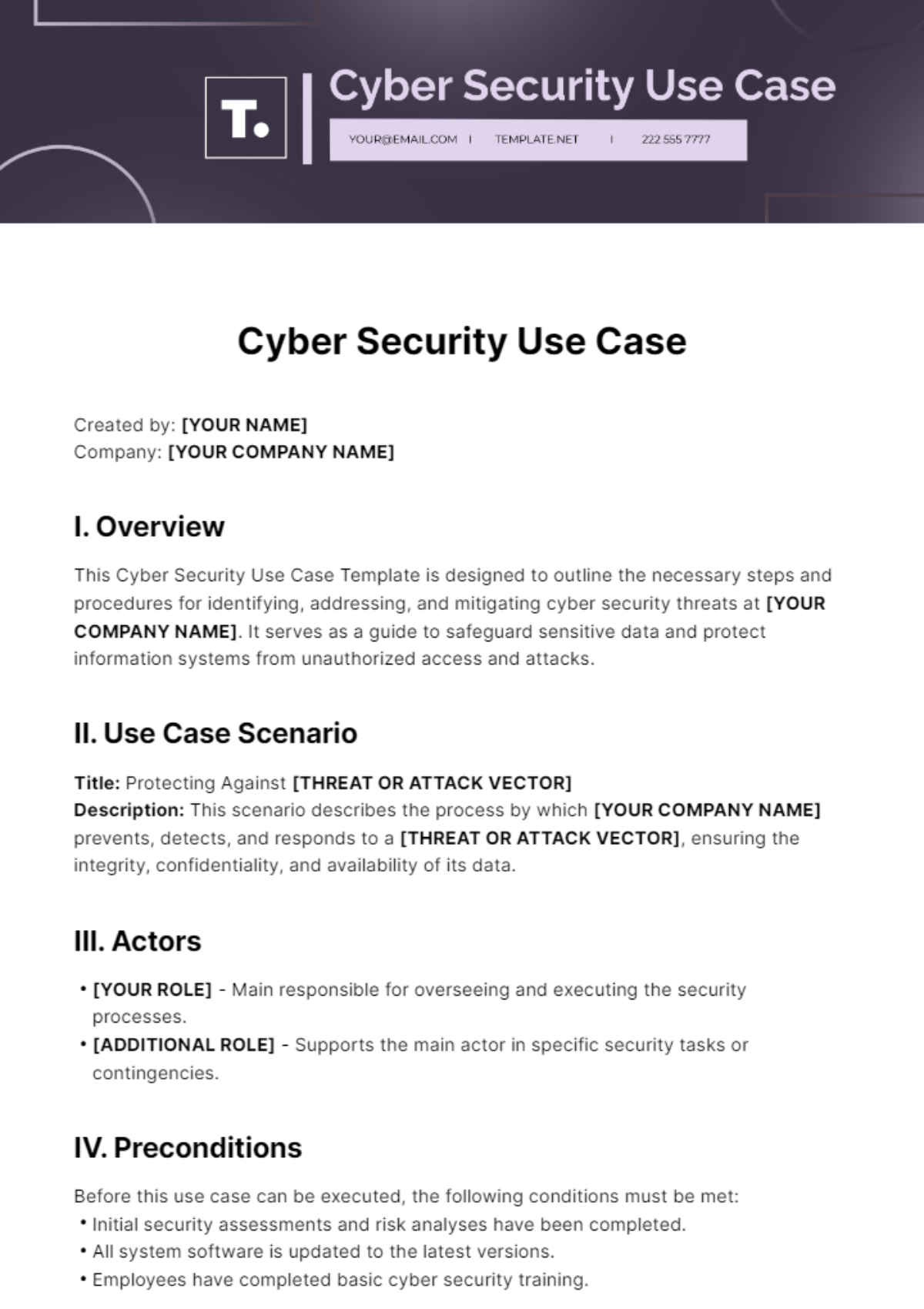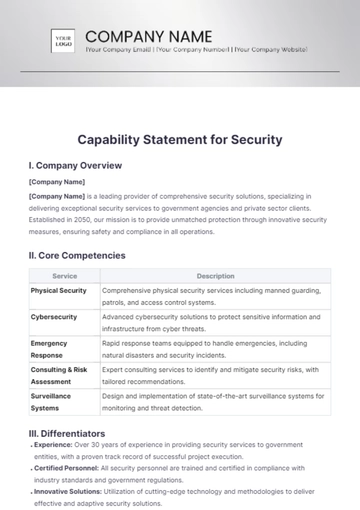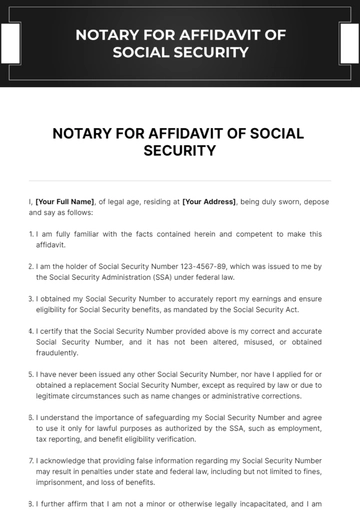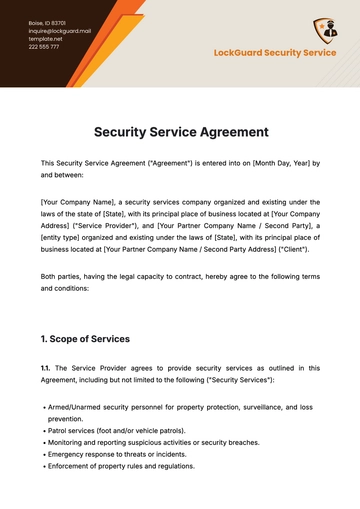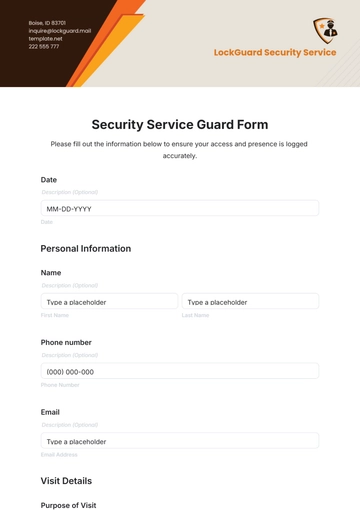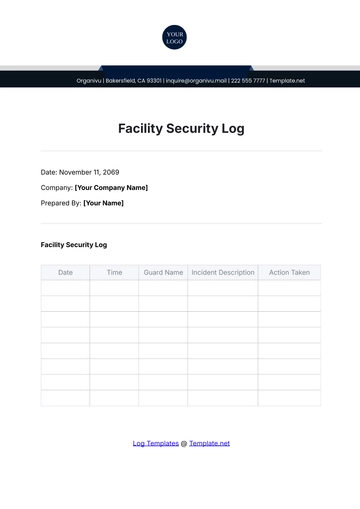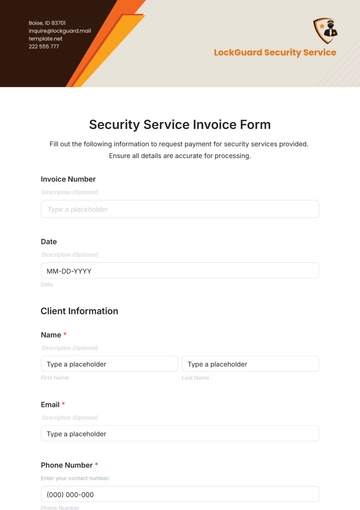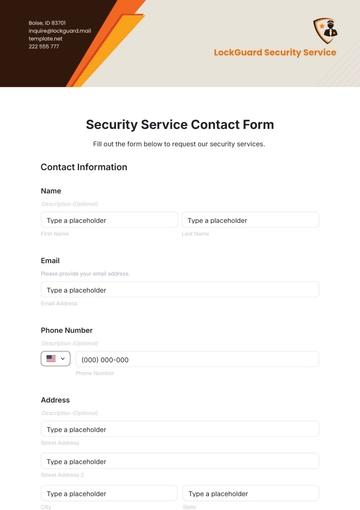Cyber Security Use Case
Created by: [YOUR NAME]
Company: [YOUR COMPANY NAME]
I. Overview
This Cyber Security Use Case Template is designed to outline the necessary steps and procedures for identifying, addressing, and mitigating cyber security threats at [YOUR COMPANY NAME]. It serves as a guide to safeguard sensitive data and protect information systems from unauthorized access and attacks.
II. Use Case Scenario
Title: Protecting Against [THREAT OR ATTACK VECTOR]
Description: This scenario describes the process by which [YOUR COMPANY NAME] prevents, detects, and responds to a [THREAT OR ATTACK VECTOR], ensuring the integrity, confidentiality, and availability of its data.
III. Actors
IV. Preconditions
Before this use case can be executed, the following conditions must be met:
Initial security assessments and risk analyses have been completed.
All system software is updated to the latest versions.
Employees have completed basic cyber security training.
V. Main Success Scenario
Identification of potential threat by [YOUR ROLE].
Immediate isolation of affected systems to prevent spread.
Notification of security breach to relevant stakeholders.
Activation of response protocols and mitigation strategies.
Post-incident analysis and report generation by [YOUR ROLE].
Implementation of recommended improvements to prevent future incidents.
VI. Alternative Scenarios
Incident Escalation: In cases where the initial mitigation efforts fail, escalate the incident to higher-level response teams.
False Positives: Procedures to address and learn from false positive incidents to refine detection strategies.
VII. Postconditions
Upon successful mitigation of a cyber threat, the system returns to normal operations with the following postconditions:
All systems are restored and secured.
A thorough audit is conducted to ensure no lingering threats.
Update and patch management schedules are reviewed and adjusted if necessary.
Stakeholders are informed of the incident outcomes and future prevention measures.
VIII. Special Requirements
Detailed security measures and tools required to successfully execute this use case:
Advanced Intrusion Detection Systems (IDS)
Comprehensive incident response platform
Regularly updated threat intelligence subscriptions
IX. Assumptions
It is assumed that:
All personnel involved are aware of their roles and responsibilities in the cyber security protocol.
The necessary security infrastructure is in place and functional.
External partners and vendors comply with [YOUR COMPANY NAME]'s security policies.
X. Frequency of Use
Depending on the threat landscape, this use case may be initiated:
Whenever threat detection systems flag potential security breaches.
As part of regular security audits conducted quarterly.
Upon identification of new vulnerabilities or threats from external security bulletins and advisories.
XI. Glossary and References
Definitions of specific terms and protocols used in this document along with references to external materials for further reading.
Threat Intelligence: Information used to understand the threats that have, will, or are currently targeting the organization.
IDS: Intrusion Detection System that scans network traffic to detect and possibly prevent malicious activities.
Use Case Templates @ Template.net
